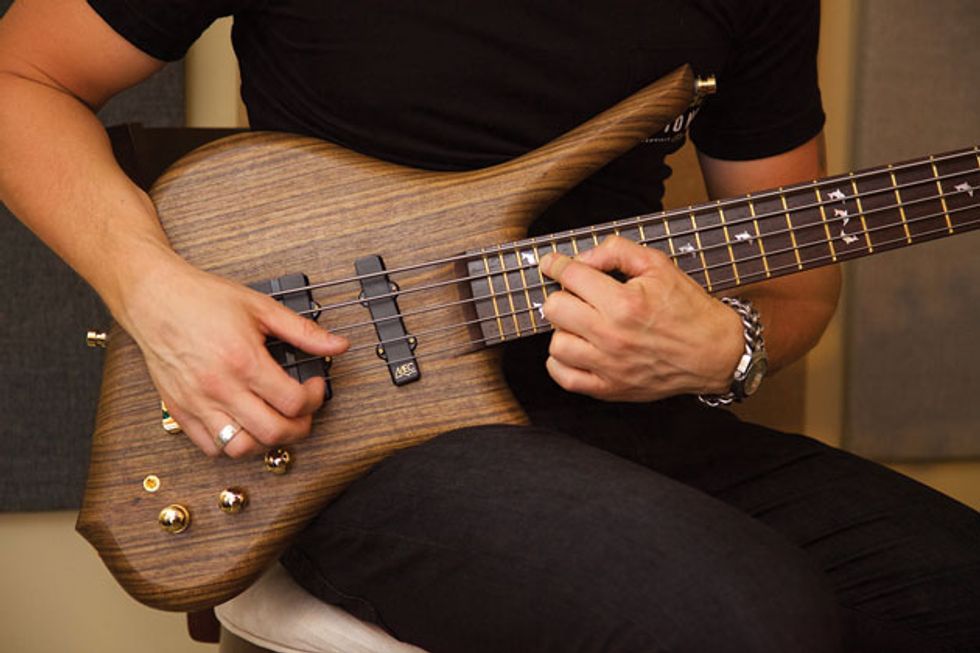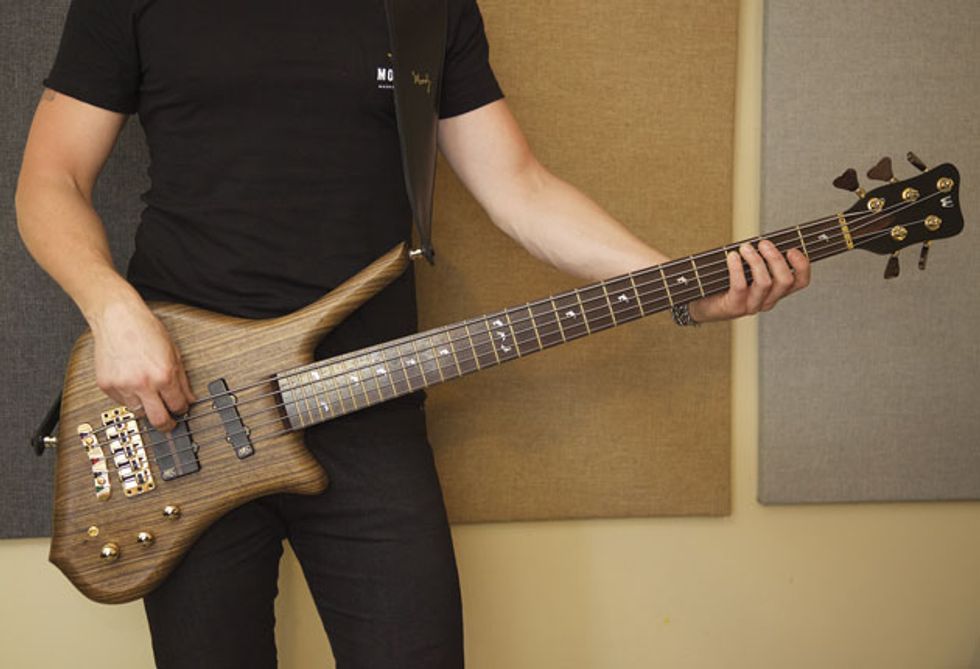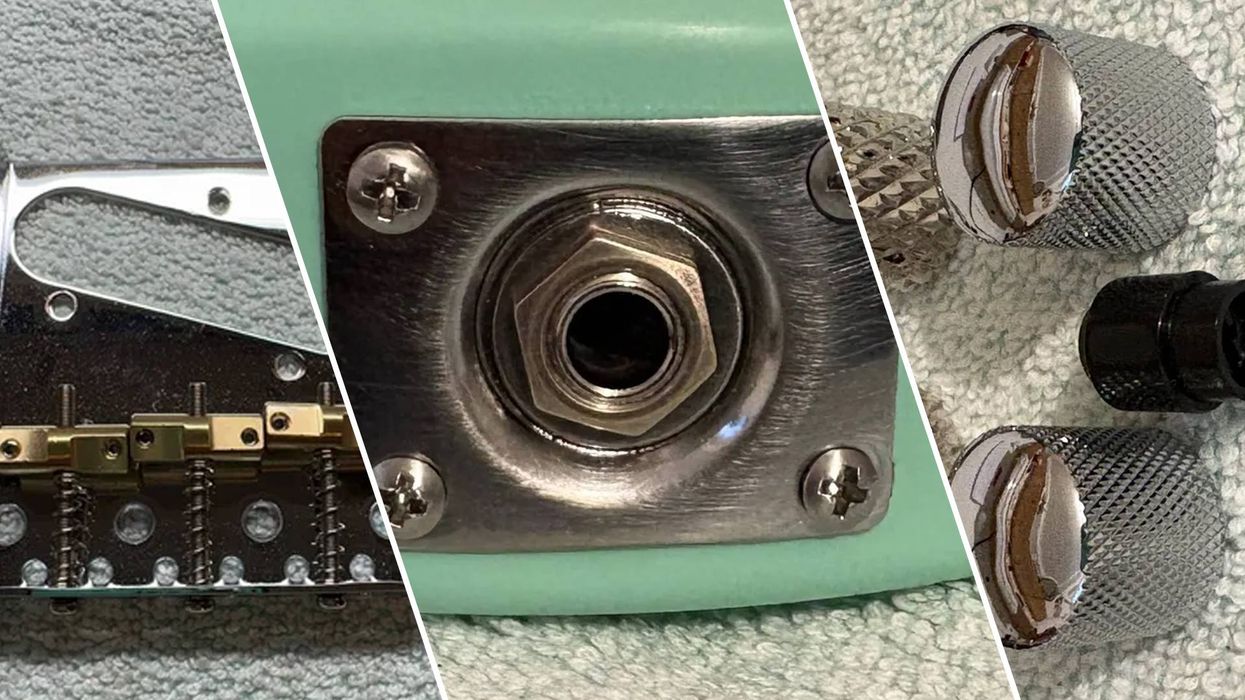After years of getting frequent compliments on my tone, I had lost a little bit of my curiosity about new gear and different equipment—things that were purposefully designed to do something very different than the gear I’d long been leaning on to provide the bread and butter of my sound. (The go-to instruments for most of my work have been Fender-style basses with bolt-on necks and passive electronics.) So I started gradually, by first changing the size and wattage of the drivers in my speaker cabinets. I also began trying string brands that weren’t in my group of beloved, usual suspects. And most recently, I’ve been experimenting with basses that are not what I’m used to.
One such bass is the Warwick Dolphin Pro 1 I had on loan for the last month. This model features just about everything I normally don’t favor in an instrument. Still, I made sure I used it in every bass playing scenario possible: a rehearsal, a small bar gig with floor monitors, a large show on tour with in-ear monitors, a full-scale Nashville recording session, a TV taping, and in normal practice sessions at home.
The shape of the Warwick’s body is completely non-traditional, so the weight of the bass was distributed differently and its contact surface with my body/ribs felttotally different. I had to alter my stance onstage as well as my strap length. I also had to alter my left-hand fretting approach by looking at the neck more and relying less on normal muscle memory. The notes simply weren’t located where I was used to finding them. (This doesn’t happen when switching between Fender-style basses, since the shape and feel is so similar between them, no matter the brand.) The exercise certainly brought me out of my comfort zone; I didn’t go for quite as many fills above the 12th fret. But anything that makes you rethink techniques you’ve been using for a long time, prompts attention to detail, and provides the slight fear you had as a beginner? Well, that’s a very good thing.
In practice sessions at home, I discovered that playing a 26-fret instrument instead of one with 21 or 22 frets presented some other options for adventure. The chord shapes I often use around the 12th and 15th frets did not work above the 20th fret. I have what is commonly known as “bass player fingers” (i.e., not skinny), so some of the chords I normally hit easily took some serious Tetris-like skills to fit on the smaller frets. Sitting down and practicing on a bass without a traditional bottom horn was also a challenge until I figured out how to properly balance the instrument on my knee.
Positioning the body of this Warwick Dolphin Pro 1 a little further off my hip than I would with a more traditional bass helped put the notes right where my muscle memory wanted them to be.
The nature of playing a neck-through, more-modern-sounding instrument made with dense, heavier woods is that the attack is faster than every bass I’ve ever been used to. I feel like if I play with a soft attack on a more traditional bass, the notes come out softly and slowly, which is one of the reasons many people prefer those instruments. They are dynamic. It’s like driving a car with a lot of horsepower under the hood, but you have to really push on the gas to make the car scream—and it still takes a second to kick in. When playing this new-to-me modern bass, I felt like the punch and immediateness of the attack happened even when I didn’t play very hard. It’s kind of like trying not to push the accelerator too hard in a Ferrari while sitting in rush hour traffic.
We all make our instrument choices based on appearance, genre, feel, and tone. The style of instrument I used to widen my tonal horizons is most often used in modern metal or fusion. So, here’s my challenge for you: If you normally play, say, modern metal or fusion, do what you’re “not supposed to do” and grab an old short-scale Gibson or Hofner. New doors can open by getting over your tone and trying something different, even if it is for just a short time. Happy experimenting!









![Rig Rundown: AFI [2025]](https://www.premierguitar.com/media-library/youtube.jpg?id=62064741&width=1245&height=700&quality=70&coordinates=0%2C0%2C0%2C0)












 Shop Scott's Rig
Shop Scott's Rig




![Rig Rundown: Russian Circles’ Mike Sullivan [2025]](https://www.premierguitar.com/media-library/youtube.jpg?id=62303631&width=1245&height=700&quality=70&coordinates=0%2C0%2C0%2C0)










































